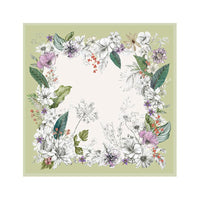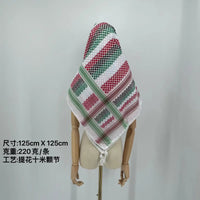Fashioning Freedom: The Journey of the Palestinian Keffiyeh
In the 60s and 70s, a wave of students and anti-war activists across the globe embraced the Palestinian keffiyeh as a powerful symbol of their movement. Swedenburg shares that it was during this era that the keffiyeh transcended its Arab origins, becoming a cherished garment among political protesters, anti-missile advocates, and a badge of resistance worn by anti-imperialists like the late, great Fidel Castro of Cuba.
Castro wore it with pride, as did Nelson Mandela. According to Swedenburg, "There was an almost universal solidarity among left-wing forces with the Palestinian struggle. Even Che Guevara visited the Gaza Strip in his final years."
The anti-colonial and anti-imperialist struggles in the developing world evoked widespread sympathy. Swedenburg elaborates, "It started with the Vietnamese struggle, but also included Chile's socialist experiment under Allende, the armed resistance in Mozambique and Angola against Portuguese colonialism, the fight against apartheid in South Africa, and more."
"Within the anti-war movement, particularly among leftist and anti-imperialist circles, there was a strong sense of solidarity with the Palestinian resistance. As a result, the keffiyeh became a common sight in these groups," Swedenburg adds.
From there, the keffiyeh effortlessly made its way into mainstream fashion. Lingala cites a 1988 Time Magazine article that discussed the Palestinian keffiyeh's presence in American street style and its connection to the first Palestinian intifada, which began in 1987. "Those interviewed for the article, who wore the keffiyeh, were unaware of any political connotations and simply wore it as a fashionable accessory," Lingala notes.
The keffiyeh even found its place in the 2017 exhibition "Is Fashion Modern?" at New York's Museum of Modern Art. The senior curator remarked, "The keffiyeh has come to carry profound political significance. However, in some instances, it has also become a fashion accessory that is completely separate from its original context and is appreciated solely for its aesthetic appeal."
Unfortunately, the mainstream adoption of the keffiyeh has not been a boon for Palestinian manufacturers. Local factories that produce the traditional keffiyeh have closed down as mass production shifted to places like China.
The Hirbawi family, who have been manufacturing the keffiyeh since 1961, soon found that cheaper versions from China were undercutting their products, which are crafted in Hebron, known as Al-Khalil to Palestinians. In an earlier interview, Abed, one of the brothers running the factory, told Middle East Eye, "When keffiyehs made in China flooded the market, our looms fell silent." As demand for Palestinian-made keffiyehs dwindled, production followed suit. It took another 15 years for production to regain momentum.
This perceived "cheapening" of the keffiyeh and the stripping away of its symbolic values have led to accusations of cultural appropriation. In addition to mass-market products, high-end designers have also produced their own versions, including Balenciaga's $3,000 iteration in 2007, as well as designs by Chanel and Fendi.





